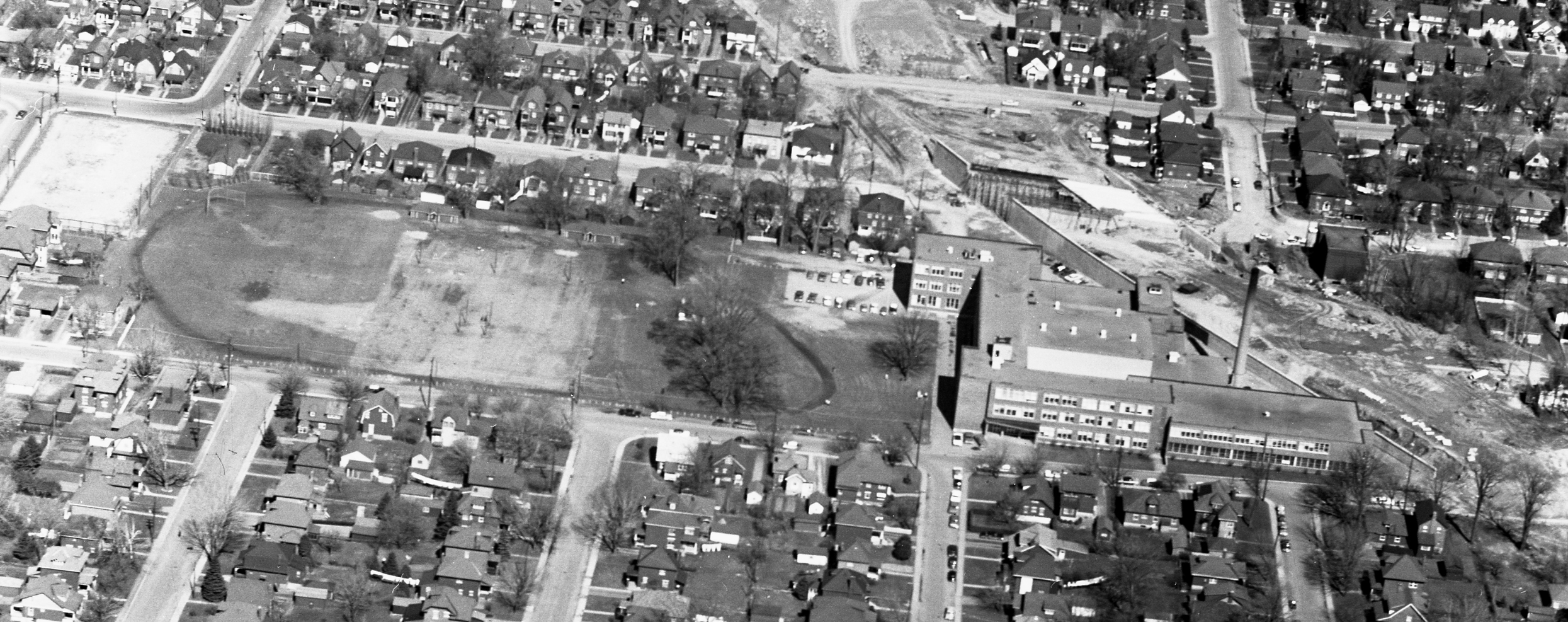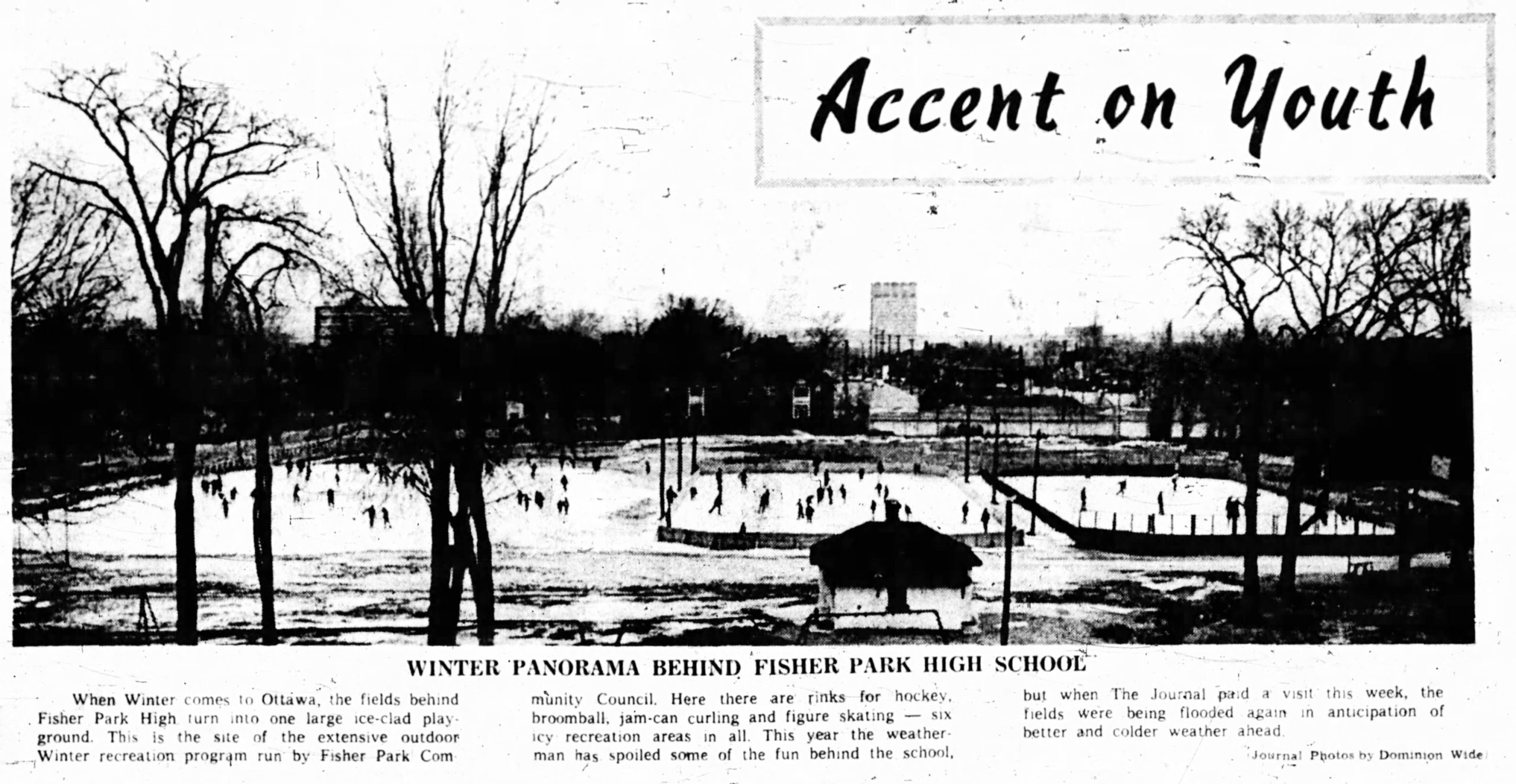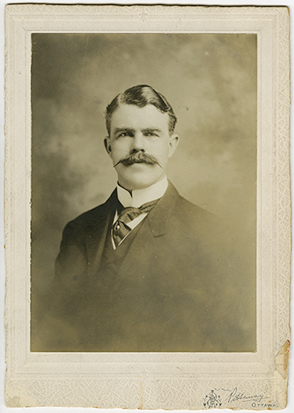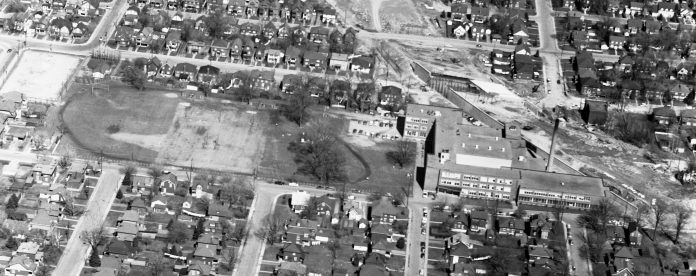
By Dave Allston
2020 is a historic year for Fisher Park, the centerpiece of Kitchissippi. It was 100 years ago that Fisher was first established as a park, playground and a location that would remain the community hub for a century and beyond.
During the 19th century, the land originally formed part of the Hinton family farm. A wide and deep ditch bisected the property, close to where the bike path now runs east to west alongside the basketball court and baseball diamond. This was to carry the runoff of Cave Creek and the farms south of Carling that would flood the property each spring. Otherwise, it sat as empty brush, except for occasional local militia training exercises around the turn of the century.
Tracks were laid out for J.R. Booth’s Ottawa, Arnprior and Parry Sound Railway in 1892 (where the Queensway runs today), creating the diagonal property boundary that still exists today, and splitting the future park space from the land to the south which would soon become the site of the Ottawa Electric Railway’s West End Park resort (1896), later a residential neighbourhood. The farmers sold their land to investors (the Ottawa Land Association) who preserved the future Fisher site and the surrounding area as an investment.
Finally in 1919, the OLA sold their holdings west of Harmer via auction. As luck would have it, they excluded the land east of Harmer from the auction, leaving most of the lots unsold into 1920.

It was in February 1920 that a new community association was formed, the West End Municipal Association (WEMA), representing the residents of Hintonburg and the exploding new neighbourhood in Wellington Village. A primary focus of the WEMA was to push the City of Ottawa to establish recreational space in the community, as no official playground and only a few small parks existed west of Plouffe Park.
The City originally considered sites at what is now the Grace Manor, Somerset Square, Reid Park, and the east side of Parkdale near Sherwood. The Salvation Army had plans to build a hospital and would not sell their land at the corner of Wellington and Parkdale; Somerset Square was tied up in politics between the NCC-predecessor Ottawa Improvement Commission and the City; and Reid Park, though boasting the old stone house that could have formed part of the facilities, was deemed too expensive, particularly as it was deemed that a tunnel under the train tracks would be required to connect to Rosemount for the children of Connaught School.
Fisher Park nearly wound up located on the east side of Parkdale at Sherwood. The Ottawa Playgrounds Association committee selected that site, supported by a majority vote of WEMA residents. However, the WEMA vote had taken place at a meeting on April 12th that was poorly attended due to unseasonably bad weather. This led to a second look, and in a turnaround later that month, likely largely related to land costs, the WEMA and OPA changed their decision. The Parkdale plan was abandoned, and the west side of Holland was chosen instead due to its perfectly level ground, its proximity to the growing community, and the proposed school (Elmdale). A deal was struck with the OLA to purchase the land for $36,000.
A City Council meeting in May nearly had the deal derailed. The Ottawa South Municipal Association and others were upset that the purchase would take up nearly the entirety of the $50,000 playgrounds acquisition budget, leaving insufficient funds for Old Ottawa South to acquire playground space.
A compromise was eventually reached, and it was agreed to purchase the land, minus six lots at the corner of Harmer and Byron (where houses exist today) for $32,100. The purchase went through in June of 1920.
In August, WEMA met with W.J. Neale, City Supervisor of Recreation, to discuss the plans for the new park, which was to include “games, tennis courts, a first class bowling green, a proper baseball diamond and probably a large swimming pool”. A skating rink and toboggan slide was also planned for the winter of 1920-21. Work began on the park that fall, allowing for some early sports to be played on it, with the bulk of the sports and playground facilities to be ready for the Spring of 1921.
It was on August 13th, 1921 that the official opening ceremony was held for what was technically known as the “West End Municipal Association Playgrounds” but which was introduced as “Fisher Park,” named for Mayor Harold Fisher, who had not run for re-election at the end of 1920. Over 1,000 were in attendance, including the ex-Mayor Fisher, with many events held including a baseball game between the Ottawa Senators NHL team and the West End Baseball Club.
This event would be the first of what would immediately become annual summer sports days, and February winter carnivals, at their peak drawing over 5,000 residents from across the city. Games, races and events often pitted residents from the north and south sides of Wellington against each other.
Lawn bowling was a feature of Fisher Park beginning that spring. The greens, which boasted electric lighting (located where the parking lot meets the basketball court today) were open every afternoon and evening, free to the public.

Many sports were played at Fisher over the early years, including lacrosse, bicycle polo, and even a nine-hole golf course which briefly opened at the far south-end of the park in 1925.
The Elmdale Tennis Club opened in June of 1937 with four clay courts, located where the school now stands.
After surveying the needs of the city in the fall of 1944, the provincial government recommended construction of a high school in the west end of the city. There were 1,000 students attending Ottawa high schools who lived west of Preston Street (Nepean High School and Westboro would be outside the city limits until the 1950 annexation).
Following much debate, and much opposition to surrendering a large piece of one Ottawa’s largest and finest parks, in September of 1945, it was officially announced that Fisher would be the location of the new school (which would be paid for half by the province, half by the city). Initial plans called for the school to be built at the opposite end of the park (close to Byron), but a reversal was made to ensure a football field could fit in the remaining park space.
From the beginning, Fisher Park was always a planned combination school and community centre, the first of its kind in Canada. High-end amenities were added to ensure the facility would be one of the most modern in Canada, including the largest gym in the city (the first in Ottawa constructed without pillars to obscure the view of spectators), a health clinic, large library, and a large sound-proof auditorium with motion picture projection facilities (though its size later had to be significantly scaled down due to sky-rocketing costs, and a planned swimming pool was also a late removal).
One of the required features in the original proposals for the school was the assurance to the city and community that no fence would be put up around the school, that it would always sit within the park. There was also a requirement that it be designed in a Z-shape so that every room would be “on the outside”.
Completion of the project took four years as building costs skyrocketed. The first sod was turned on May 3rd, 1948, at the south-east corner of the park, and the cornerstone was laid on November 12th by Governor General Viscount Alexander. The original estimate of $1.65M ballooned to $2.1M by the project’s end; the school was completed in time for the start of the 1949-50 school year. Other than a six-room addition in 1964, the school retains the same footprint today.
23 organizations in the community worked together as an advisory council to formulate the recreational program. A coordinator was hired (John G. Carruthers) to organize the community use of the school on evenings and weekends.
Meanwhile the Elmdale Tennis and Lawn Bowling Clubs moved to their new locations where they remain today. Fisher Park over the coming decades would continue to see constant community use for football, baseball, hockey, soccer, basketball and other sports.
Fisher Park school closed in 1987, was leased to the Catholic Board to become Notre Dame High School, until 1994 when it reverted back to the Public board and its original name, becoming a grade 7/8 school and welcoming Summit Alternative to share the building.
An impressive 100 years of Fisher Park as the nexus of our community!
